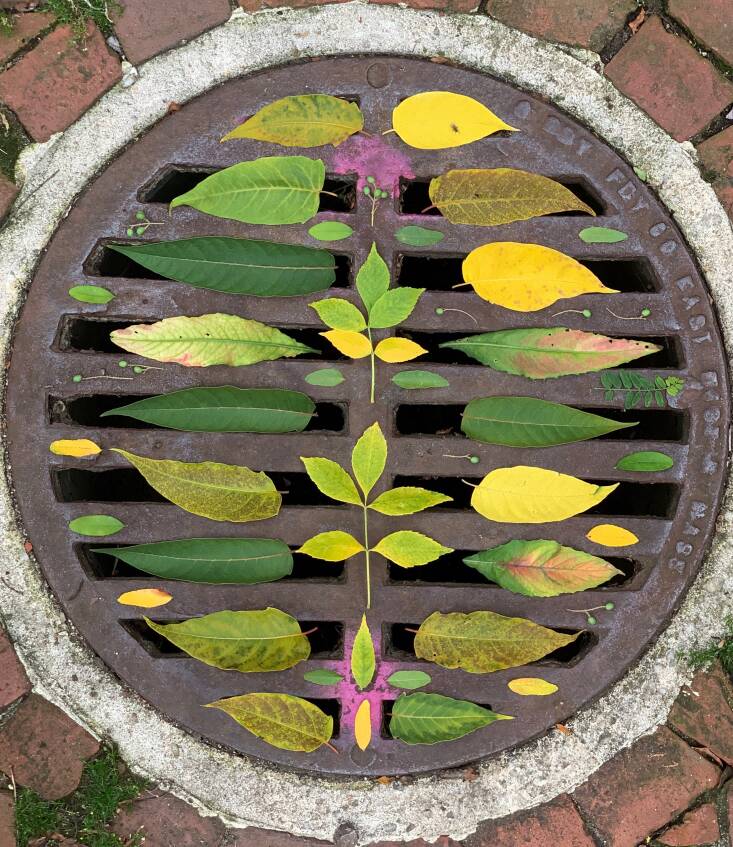I grew up outside of Boston in a shingled house filled with Marimekko prints and potted plants—a Monstera deliciosa leaf tapped on my shoulder as I practiced piano. Both of my parents were passionate gardeners. My father, a mild-mannered surgeon, tended his vegetable seedlings under grow lights on the ping-pong table in our basement. My journalist mother cultivated a forest of greenery in our kitchen and dining room, including a passion vine that bloomed so infrequently that whenever one of its intricate flowers appeared, we stopped all to celebrate. In our backyard, my father’s corn and rhubarb grew alongside the Concord grape arbor that canopied my swing set.
One of my nicknames was Marigold. I was tasked with weeding on occasion and was often sent out to pick the dinner salad. My mother gave me enforced tours of her flower beds and window boxes; my father told me that if he wasn’t a physician, he’d be a farmer. And yet I never became a gardener myself. I don’t know why except that there never have seemed to be enough hours in the day.
Instead, unexpectedly, I became obsessed with leaves after we adopted our rescue dog, Enrique, 13 years ago. You see, I’ve always been a collector—vintage wastebaskets, tintype photos, wooden coat hangers—and so, naturally, I came home from dog walks with fistfuls of greenery. Inspired by the ephemeral work of the great land artist Andy Goldsworthy, I started assembling my finds on accommodating surfaces of all sorts, from our neighbor’s cellar bulkhead doors to manhole covers and our kitchen table. Here’s a look at some of my encounters with urban plant life.
Photographs by Margot Guralnick (@dogwalkdiary), unless noted.

Making these arrangements, my Dog Walk Diary, as I call it, has become something I’ve been doing daily for nearly eight years now, with or without Enrique and wherever I happen to be. Year-round, there’s never a shortage of material that astonishes me in the leafy corner of the Bronx where we live.

Fortunately for me, my husband loves to garden: we have castor beans, shishito peppers, zinnias, cardoons, and so many heirloom tomatoes thriving in the front and back of our house. And our son is a plant microbiologist in training, which I like to think is akin to red hair: a trait that has to be passed on by both parents.

I’ve started showing large-format archival pigment prints of my work in stores and galleries. I recently made a composition from pressed leaves on a courtyard wall at The Invisible Dog Art Center in Brooklyn, and, on Oct, 22, an exhibition of my work is opening at Abroad Modern, a great lifestyle shop and social enterprise in Cambridge, MA. The show came about because I was an avid customer; here are the details.

I’ve started learning the names of my finds thanks to the app Picture This, which I’ve found to be the most helpful of the several I’ve tried. But did you know that iPhones now also have a built-in plant identifier in Photos? Certain favorite leaves of mine, such as sassafras and smokebush, feel like old friends. And I’ve become unavoidably well-acquainted with the many invasive plant species that clog NYC’s roadsides: Japanese knotweed, Ailanthus, pokeweed, mulberry, bittersweet vine, porcelain berry, and so many more.


Oh, and one last thing: the family Monstera deliciosa lives on in our Cambridge apartment. Every summer, my parents lugged it outdoors, and they repotted it so often that what had started as an 89-cent sprout purchased at the A&P supermarket—a surprise for my mother when my dad was asked to stop for milk on his way home—grew into a monster. It’s now nearly 60 years old and a beloved member of the family. We like to think of it as the oldest houseplant in America.
A few recommendations:
- Much of my tree appreciation and knowledge comes from writer-photographer/former parks employee Benjamin Swett’s 2013 book New York City of Trees, a chronicle of some of the metropolis’s most astonishing residents.
- I hugely admire London-based artist Kaori Tatebayashi’s ceramic plants and flowers.
- My neighbor, Livia Cetti, makes extraordinary paper flowers. We featured her house in Bloomsbury in the Bronx.








Have a Question or Comment About This Post?
Join the conversation